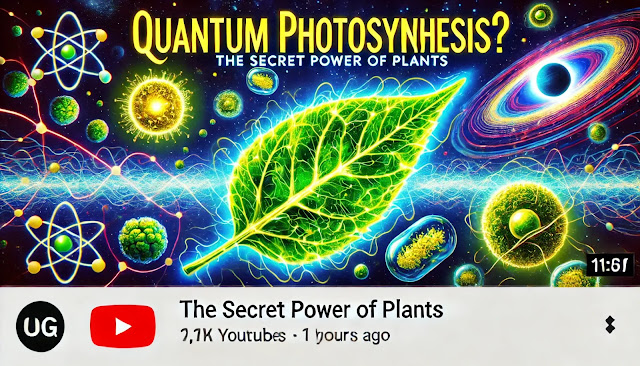What Makes Photosynthesis So Efficient?
Photosynthesis is not just a chemical process; it leverages quantum mechanics to achieve near-perfect light-to-energy conversion. At its core, plants absorb photons through chlorophyll molecules in light-harvesting complexes. These photons excite electrons, creating energy packets called excitons. The surprising part? These excitons navigate multiple pathways simultaneously—a phenomenon known as quantum coherence—to find the most efficient route to the photosynthetic reaction center.
Quantum Coherence in Action
Superposition: Excitons explore all possible energy pathways at once, akin to a quantum "wavelike search."
Efficiency: This mechanism ensures minimal energy loss, outperforming even advanced solar cells.
Room Temperature Feat: Unlike artificial systems requiring ultra-cold conditions, plants achieve this at ambient temperatures.
These quantum tricks allow plants to convert sunlight into chemical energy with an efficiency that has long puzzled scientists.
Hacking Photosynthesis for Climate Solutions
Unlocking Nature’s Blueprint
Researchers are now "hacking" photosynthesis to enhance its efficiency and adapt it for renewable energy production. Key breakthroughs include:
Ultrafast Spectroscopy: Scientists have observed electron movements during photosynthesis at femtosecond scales, uncovering previously unknown pathways to extract energy earlier in the process.
Genetic Engineering: Tools like CRISPR-Cas9 are being used to modify photosynthetic pathways, boosting crop yields and resilience to climate stress.
Synthetic Biology: Innovations in synthetic photosystems aim to replicate nature’s quantum efficiency in artificial devices.
Applications in Renewable Energy
Clean Fuels: By harnessing early-stage electrons, researchers are developing methods to generate hydrogen and other clean fuels directly from sunlight.
Solar Cell Design: Mimicking quantum coherence could revolutionize solar technology, making it more efficient and cost-effective.
Quantum Biology’s Role in Climate Resilience
Adapting Crops for a Changing World
Climate change poses significant threats to global food security. Enhancing photosynthesis can help:
Increase crop yields by up to 30% by optimizing enzyme recovery during sun-shade transitions.
Develop drought-resistant plants by tweaking genetic markers involved in water-use efficiency.
Carbon Sequestration
Improved photosynthetic efficiency could also enhance carbon capture by plants, mitigating greenhouse gas emissions.
Common Questions About Quantum Photosynthesis
1. How does quantum mechanics improve photosynthesis?
Quantum coherence allows plants to transfer energy with near-perfect efficiency by exploring multiple pathways simultaneously.
2. Can we replicate this process artificially?
Yes, researchers are developing artificial photosystems and solar cells inspired by nature’s quantum tricks.
3. What are the environmental benefits?
Enhanced photosynthesis could improve crop productivity, support renewable energy generation, and increase carbon sequestration.
Future Perspectives: From Plants to Technology
The study of quantum effects in photosynthesis is reshaping our understanding of biology and energy systems:
Interdisciplinary Research: Combining physics, biology, and engineering is unlocking new possibilities for sustainable technologies.
Scalable Solutions: From agricultural innovations to renewable energy breakthroughs, the potential applications are vast.
Conclusion: Harnessing Nature’s Genius
Plants have been perfecting photosynthesis for billions of years, leveraging quantum mechanics to sustain life on Earth. By decoding these natural hacks, we can address pressing climate challenges and revolutionize renewable energy systems.
Actionable Takeaways
Support research into quantum biology and its applications.
Advocate for sustainable agricultural practices that enhance photosynthetic efficiency.
Explore renewable energy technologies inspired by nature.
Nature holds the key to a sustainable future—let’s unlock it together.
For more insights on quantum biology and sustainability innovations, explore resources from NASA, Nature, and the IPCC






.png)

.png)
.png)
0 Comments